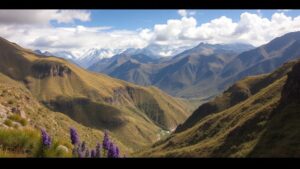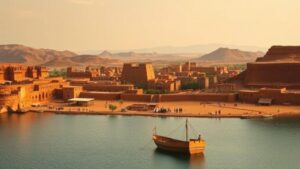Exploring underwater volcanic ridges for evidence of undiscovered marine megafauna.
Exploring Underwater Volcanic Ridges for Evidence of Undiscovered Marine Megafauna
The world’s oceans cover over 70% of the Earth’s surface, yet they remain one of the least explored frontiers of our planet. Among the treasures hidden beneath the waves are underwater volcanic ridges, often serving as vital habitats for an array of marine life, including potentially undiscovered megafauna. This article delves into the significance of underwater volcanic ridges, the methods of exploration used, and the implications of finding new species in these fascinating environments.
The Importance of Underwater Volcanic Ridges
Underwater volcanic ridges, also known as mid-ocean ridges, are significant geological formations formed by tectonic plate movements. e ridges not only play a crucial role in the formation of new oceanic crust but also create unique ecosystems that can harbor diverse and sometimes endemic species.
For example, the East Pacific Rise, located along the Pacific Ocean floor, is part of the largest volcanic system on Earth. Data from the National Oceanic and Atmospheric Administration (NOAA) shows that this area supports various marine life, including hydrothermal vent communities that thrive on chemosynthesis, rather than photosynthesis. Such unique living systems tend to attract marine megafauna, including large species like sharks and rays.
Technological Advances in Exploration
The exploration of underwater volcanic ridges has evolved significantly with advancements in technology. Historically, researchers relied heavily on manned submersibles and remotely operated vehicles (ROVs) for exploration. But, recent innovations have introduced autonomous underwater vehicles (AUVs) equipped with advanced sensors and imaging technology to explore these depths more efficiently.
- For example, the AUV Sentry, developed by the Woods Hole Oceanographic Institution, has been instrumental in mapping underwater topography and identifying biological hotspots along the mid-ocean ridges.
- In 2022, the NOAA Ocean Exploration team used AUVs equipped with high-resolution sonar to explore the tectonic features of the Coral Sea, revealing previously undocumented seafloor habitats and their associated marine life.
Discovering Marine Megafauna
Marine megafauna refers to the large animals of the ocean, typically defined as species that weigh over 30 kilograms. Exploring underwater volcanic ridges is crucial for discovering potential new megafauna species, especially in remote and under-sampled regions. unique habitats provided by hydrothermal vents and volcanic formations create rich feeding grounds for these massive creatures.
Recent studies have indicated that such regions are often biogeographic hotspots. For example, during an expedition in April 2023, researchers discovered a population of previously unrecorded giant squids around the Juan de Fuca Ridge in the Pacific Northwest. This was a significant finding, underscoring the potential for further discoveries in similar volcanic environments.
The Potential for New Discoveries
As exploration efforts continue, the potential for discovering new species grows exponentially. Genetic sequencing technologies allow scientists to analyze and compare DNA samples from various organisms collected from underwater volcanic regions. This can lead to the identification of species that were previously grouped together under misleading classifications.
In fact, a study published in the journal *Marine Biology* in January 2023 stated that about 90% of the species in the deep ocean are still unknown to science. With underwater volcanic ridges as critical sites for biodiversity, they represent a high-priority target for marine biologists and conservationists alike.
Implications for Marine Conservation
Finding new species of marine megafauna in these ecosystems highlights the urgent need for ocean conservation efforts. Unique habitats like underwater volcanic ridges are sensitive to climate change, deep-sea mining, and other anthropogenic impacts. Protecting these areas is crucial to maintain their biodiversity and the ecological roles they play.
- Marine protected areas (MPAs) have been established in various oceanic regions, but many underwater volcanic ridges remain unprotected. Effective management and protection of these environments can promote healthy ecosystems that benefit both marine life and human stakeholders.
- Also, awareness campaigns can inform the public about the ecological significance of these underwater ecosystems, encouraging support for conservation initiatives.
Actionable Takeaways
Efforts to explore underwater volcanic ridges must continue, driven by technological innovation and a collaborative approach among scientists, conservationists, and policymakers. Key actions include:
- Advocating for increased funding for marine research and exploration.
- Supporting the establishment of MPAs around critical underwater structures like volcanic ridges.
- Promoting public engagement and education regarding the significance of ocean ecosystems and their protection.
To wrap up, exploring underwater volcanic ridges not only expands our understanding of marine biodiversity but also serves as a vital strategy for conservation efforts. The ocean holds many secrets, and the discoveries waiting in its depths are critical to preserving the health of our planet.


